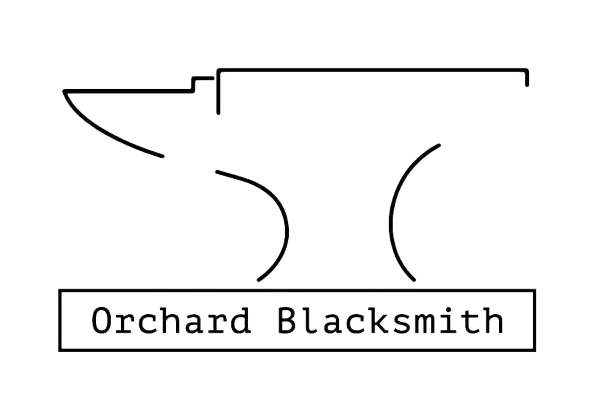Blacksmithing Troubleshooting: Cracks, Warps, and Weld Problems Solved
Blacksmithing is equal parts art and science. The fire, the steel, and the hammer don’t always cooperate the way we want them to, especially for beginners. Even experienced smiths know the frustration of cracking steel, warped projects, or a weld that just won’t take. The good news? Most of these problems have clear causes — and even clearer fixes.
In this guide, we’ll walk through the most common forging problems, why they happen, and what you can do to troubleshoot them.
1. Cracking in the Metal
The problem: Your steel develops small (or large) cracks while you’re forging.
Why it happens:
Working the steel when it’s too cold.
Using low-quality or unknown scrap steel.
Overheating the steel until it becomes brittle.
How to fix it:
Always work within the correct forging temperature range (bright orange to yellow for most steels).
Avoid “burning” your steel by watching for sparks — that means it’s too hot.
Use known, quality steels whenever possible instead of mystery scrap.
2. Warping or Bending
The problem: Your piece twists or bends out of shape during forging or quenching.
Why it happens:
Uneven hammer blows.
Heating one side of the work more than the other.
Quenching too quickly or unevenly.
How to fix it:
Focus on hammer control and strike evenly.
Rotate your stock frequently while hammering.
Normalize the steel before quenching to relieve stress.
Submerge your work smoothly into the quenchant to avoid uneven cooling.
3. Cold Shuts (Folds in the Metal)
The problem: Sharp lines or cracks appear where the steel has folded over itself.
Why it happens:
Hammering the steel in a way that folds the edges without welding them.
Sharp corners catching and folding back.
How to fix it:
Keep the edges of your stock rounded, not sharp.
Forge at proper welding temperatures if you’re joining folds.
Prep the steel carefully before hammering to avoid unintended folds.
4. Overheating or Burning Steel
The problem: The steel develops bubbles, crumbles, or even sparks in the forge.
Why it happens:
Leaving the piece in the fire too long.
Running the forge too hot or with too much airflow.
How to fix it:
Pay attention to colour: bright yellow is safe, sparks mean you’ve gone too far.
Manage your fire carefully, adjusting fuel and airflow.
Don’t walk away and forget about your steel in the forge.
5. Uneven Thickness
The problem: One side of your piece is noticeably thicker or thinner than the other.
Why it happens:
Striking harder on one side than the other.
Not rotating the workpiece regularly.
Trying to force steel at too low a temperature.
How to fix it:
Work methodically — hammer, rotate, hammer.
Use calipers or a ruler to check thickness as you go.
Reheat often rather than fighting with cold steel.
6. Scale Build-up
The problem: Flaky black oxidation builds up on the steel surface and mars the finish.
Why it happens:
Oxidation naturally occurs when steel is heated in air.
Long heating times increase scale.
How to fix it:
Brush your work regularly with a wire brush.
Keep heating cycles short and efficient.
If possible, run a reducing (fuel-rich) forge atmosphere to limit oxidation.
7. Poor Forge Welds
The problem: Two pieces of steel refuse to stick together during forge welding.
Why it happens:
Dirty surfaces with scale or rust.
Heating to the wrong temperature.
Striking too hard, too soon.
How to fix it:
Clean mating surfaces thoroughly before welding.
Heat to a bright yellow, just below sparking.
Start with light hammer taps to set the weld, then use stronger blows once it’s joined.
8. Quenching Cracks
The problem: Cracks appear after hardening the steel in water or oil.
Why it happens:
Quenching at too high a temperature.
Using water when oil is more appropriate.
Stress from uneven cooling.
How to fix it:
Know the correct quenching temp for your steel — don’t overheat before the quench.
Match quenchant to steel: high-carbon steels often prefer oil, not water.
Agitate the piece smoothly in the quenchant to cool it evenly.
If you would like to discuss a potential project, please do not hesitate to contact us.
